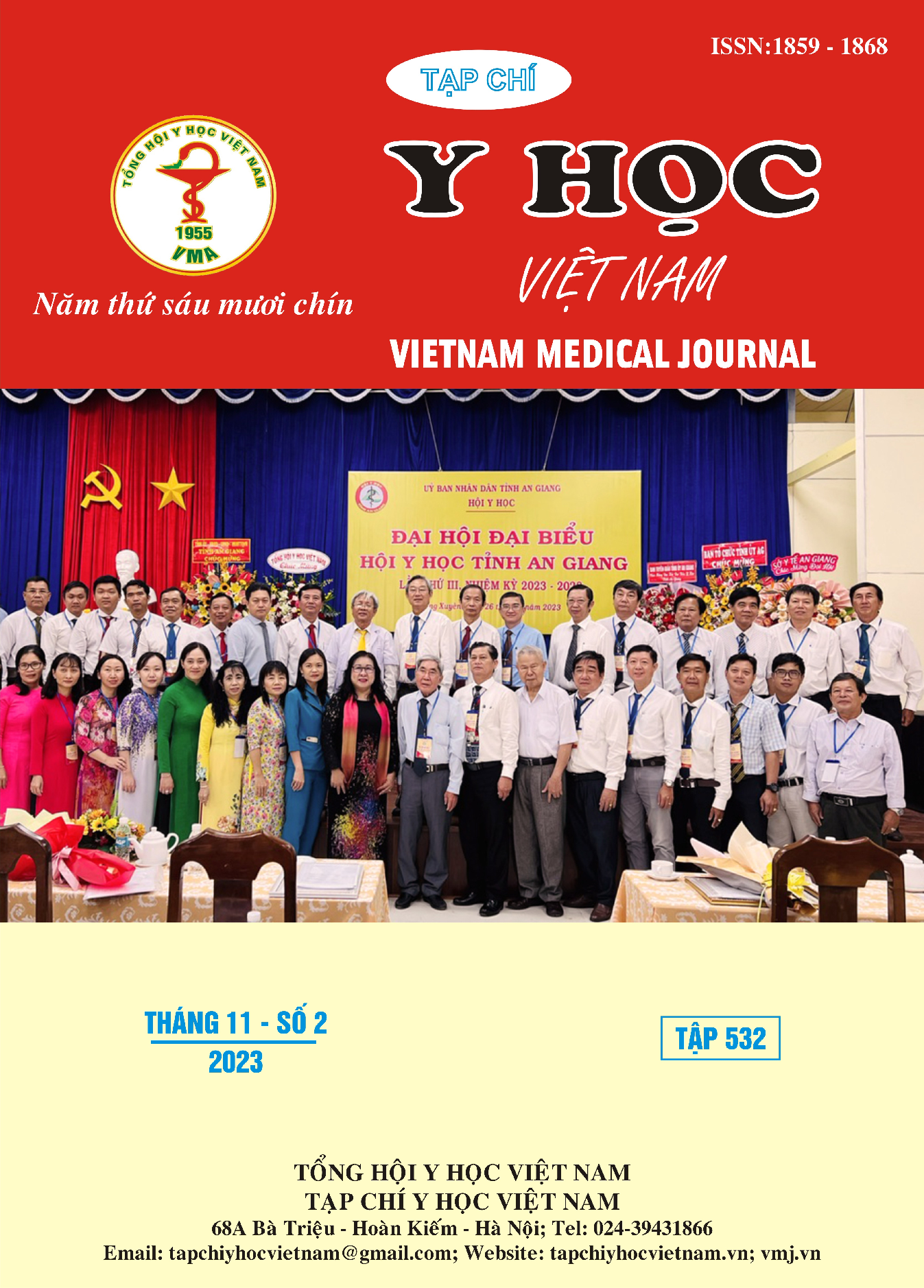ĐÁNH GIÁ KẾT QUẢ SỚM ĐIỀU TRỊ HẸP TẮC ĐỘNG MẠCH CHẬU ĐÙI MẠN TÍNH BẰNG PHẪU THUẬT HYBRID
Nội dung chính của bài viết
Tóm tắt
Mục tiêu: Đánh giá kết quả sớm trong điều trị hẹp tắc động mạch chậu mạn tính bằng phẫu thuật hybrid. Phương pháp nghiên cứu: Hồi cứu mô tả trên 31 ca bệnh hẹp tắc động mạch chậu đùi mạn tính, được điều trị phẫu thuật hybrid tại khoa Phẫu thuật Mạch máu, Bệnh viện Chợ Rẫy từ tháng 8/2018 - 02/2022. Kết quả: 31 bệnh nhân (31 chi can thiệp) có tuổi trung bình 69.2 ± 8.2, nam giới chiếm đa số, tổn thương TASC D (tổn thương động mạch) chiếm 74% và gây mê 77,4%. Tỷ lệ thành công về kỹ thuật đạt
100%, thành công về lâm sàng đạt 87,1% và tỷ lệ biến chứng là 19,5%. Theo dõi sau 1 năm, thành công về lâm sàng đạt 77%, thành công về huyết động đạt 80,8%, tỷ lệ lưu thông thì đầu đạt 85,2%, tỷ lệ đoạn chi lớn là 9,7% và tỷ lệ tử vong là 12,9%. Kết luận: Phẫu thuật hybrid điều trị hẹp tắc động mạch chậu đùi mạn tính có tỷ lệ thành công cao và an toàn.
Chi tiết bài viết
Từ khóa
: Phẫu thuật kết hợp can thiệp; Tắc chậu đùi mạn tính; Can thiệp động mạch
Tài liệu tham khảo
2. Marston W. A., et al., "Natural history of limbs with arterial insufficiency and chronic ulceration treated without revascularization", Journal of vascular surgery, 2006, 44(1), pp. 108-114.
3. Chiu KW, Davies RS, Nightingale PG, Bradbury AW, Adam DJ. Review of direct anatomical open surgical management of atherosclerotic aorto-iliac occlusive disease.
European journal of vascular and endovascular surgery: the official journal of the European Society for Vascular Surgery. Apr 2010.39(4):460- 71. doi:10.1016/j.ejvs.2009.12.014
4. Mason RA, Smirnov VB, Newton GB, Giron F. Alternative procedures to aortobifemoral bypass grafting. The Journal of cardiovascular surgery. Mar- Apr 1989.30(2):192-7.
5. Sharma G, Scully RE, Shah SK, et al. Thirty- year trends in aortofemoral bypass for aortoiliac occlusive disease. Journal of vascular surgery. Dec 2018;68(6):1796-1804.e2. doi:10.1016/j.jvs.2018.01.067
6. Piotrowski JJ, Pearce WH, Jones DN, et al. Aortobifemoral bypass: the operation of choice for unilateral iliac occlusion? Journal of vascular surgery. Sep 1988;8(3):211-8. doi:10.1067/mva.1988.avs0080211
7. Bredahl K, Jensen LP, Schroeder TV, Sillesen H, Nielsen H, Eiberg JP. Mortality and complications after aortic bifurcated bypass procedures for chronic aortoiliac occlusive disease. Journal of vascular surgery. Jul 2015;62(1):75-82. doi:10.1016/j.jvs.2015.02.025
8. Henry M, Amor M, Ethevenot G, Henry I, Mentre B, Tzvetanov K. Percutaneous endoluminal treatment of iliac occlusions: long- term follow-up in 105 patients. Journal of endovascular surgery: the official journal of the International Society for Endovascular Surgery. Aug 1998;5(3):228-35. doi:10.1583/1074- 6218(1998)005<0228:Petoio>2.0.Co;2
9. Carnevale FC, De Blas M, Merino S, Egaña JM, Caldas JG. Percutaneous endovascular treatment of chronic iliac artery occlusion. Cardiovascular and interventional radiology. Sep-Oct 2004;27(5):447-52. doi:10.1007/s00270-004-0086-5
10. Patel MR, Conte MS, Cutlip DE, et al. Evaluation and treatment of patients with lower extremity peripheral artery disease: consensus definitions from Peripheral Academic Research Consortium (PARC). Journal of the American College of Cardiology. Mar 10 2015;65(9):931-41. doi:10.1016/j.jacc.2014.12.036


